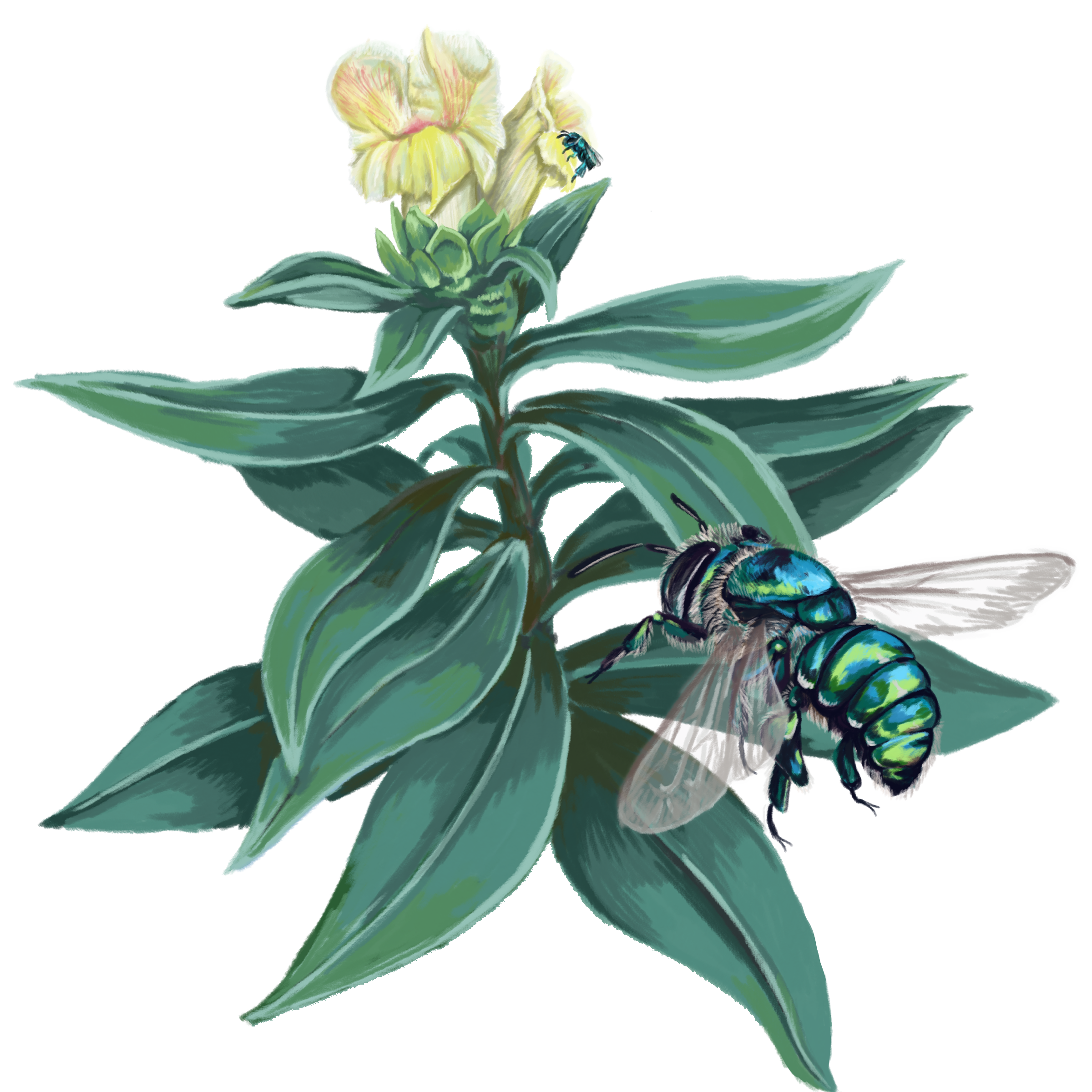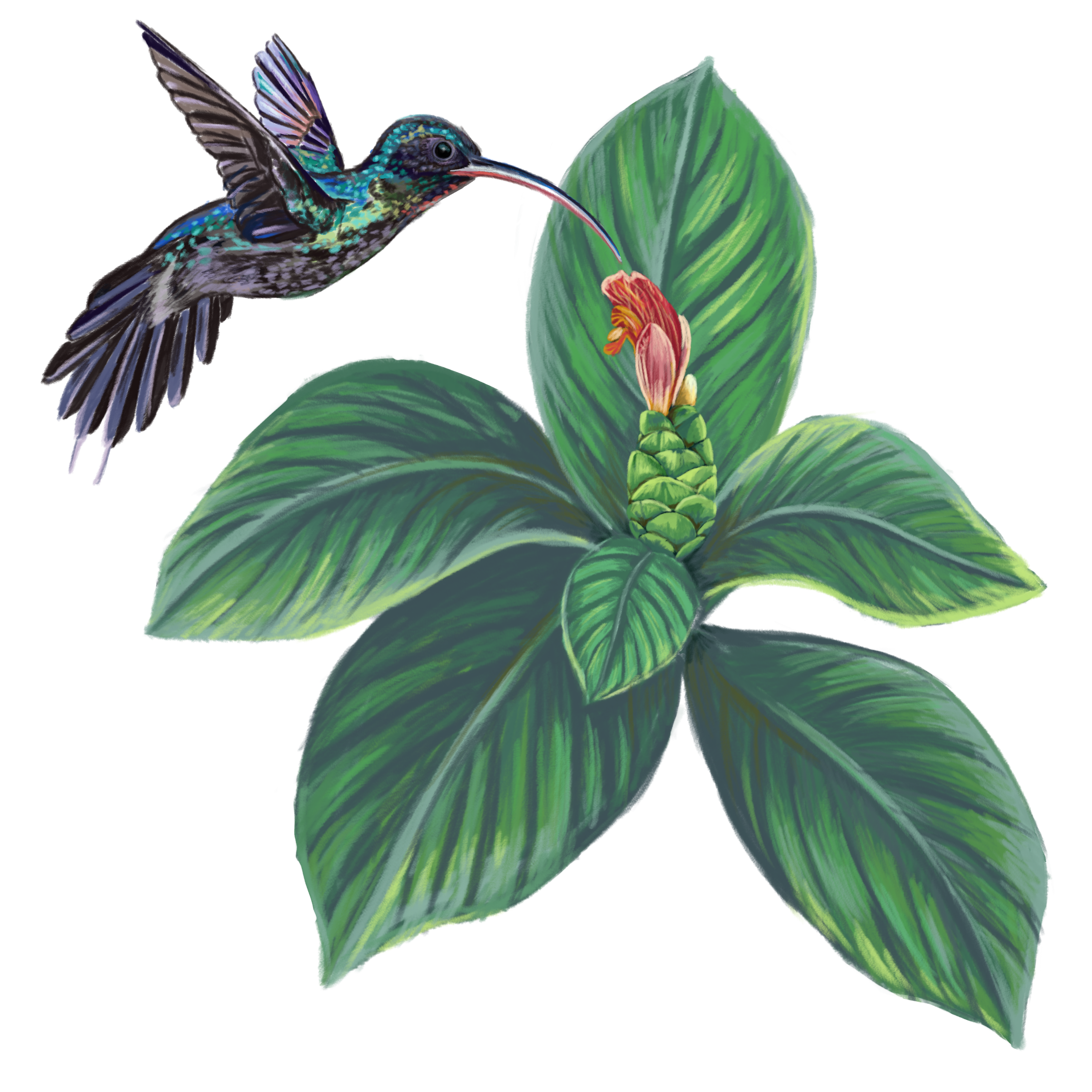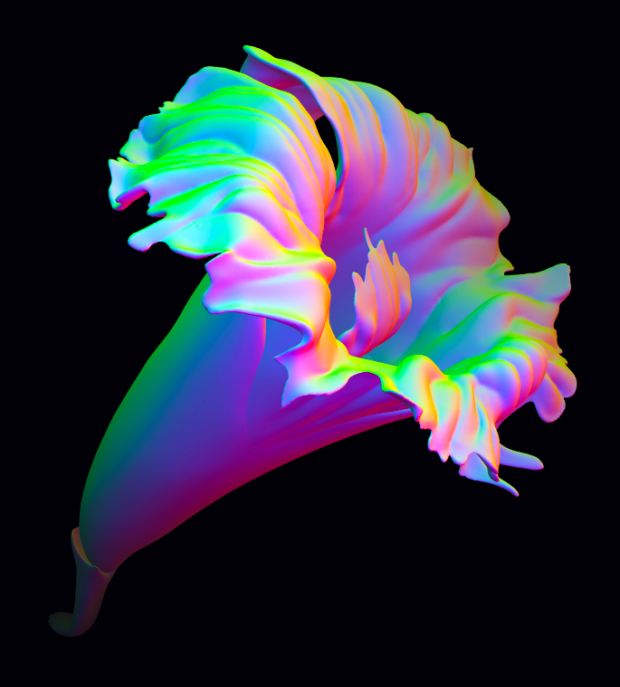The birds, the bees, and the spiraling family trees
Spiral gingers have evolved different flower shapes to cater to their preferred winged pollinator. Ariana Remmel reports with illustrations by Liz Wahid.
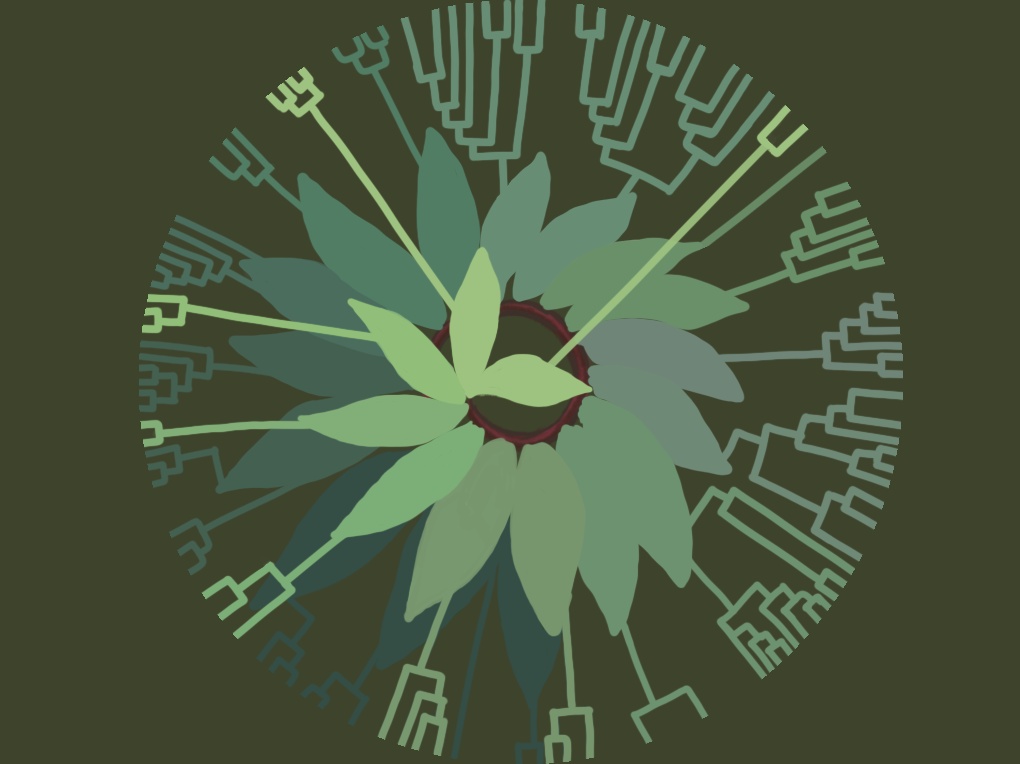
Illustration: Liz Wahid
In the early hours before sunrise, Rossana Maguiña treks through the cool shade of the Peruvian rainforest with her field kit. At one site after another, she trains a video camera on a set of freshly opened flowers, hoping to capture footage of winged visitors. It takes more than half an hour to walk between each cluster of plants scattered across the mountainside, and hours to arm all the cameras for filming. By the time Maguiña is done, the birds have begun their morning songs and the first rays of sunlight have lifted the fog from the forest floor.
“It’s like getting to see the forest wake up,” she said. Every day, Maguiña tells the rainforest good morning and asks its permission once again to study its secrets. Then she waits.
The tropical regions of our planet are some of the most biodiverse in the world—leading scientists to wonder what caused so many different species to evolve in these ecosystems. Kathleen Kay, an evolutionary ecologist at the University of California, Santa Cruz, is trying to answer this question by studying plants.
“If you don’t know much about plants, they’re like a green background,” Kay said. “Once you start to learn more and more about them, they become these really interesting creatures that just have intelligence in a totally different way.”
Maguiña, a student in Kay’s lab, studies a plant from the genus Costus, commonly known as spiral gingers. At the tips of their long, gently twisting stems, Costus plants grow flowers that Maguiña is using to figure out what caused their rapid evolution. Over 50 Costus species grow in the tropics of Central and South America—a region called the neotropics. Some Costus species grow in low elevation; others prefer the high mountain air. Some stake their reproductive success on the birds and the bees, evolving flower shapes that favor only one of these two types of pollinators. This diverse set of evolutionary challenges make Costus flowers an ideal model organism for investigating how species arise in the neotropics.
There’s no one way to answer these questions, however. Maguiña chooses to study Costus in the field while Kay’s other students stay behind in the lab. But together, these scientists are working to understand the explosion of biodiversity in the neotropics by focusing on this one spiral-stemmed plant. The results could help scientists understand how natural environments are affected by changing climates.
A closer look at the green background
It turns out that if you want to study evolution and ecology, plants are a pretty good place to start.
“They’re weird creatures. They have all these interesting lifestyles because they’re stuck in one place and they make their own food.” ~Kathleen Kay
First, museums and universities have extensive historical records of plants from around the world dating back hundreds of years. As early as the 18th century, naturalists like Alexander von Humboldt doggedly sought out botanical specimens from the neotropics because of the diversity of life that could be found there. Today these collections are housed in herbariums that provide precious insight into the past by preserving both visual records and genetic material to evolutionary biologists looking for trends in how evolutionary family trees develop over time.
Second, plants are easy experimental subjects. They don’t move—which makes them easy to find again in the wild. Nor do plants experience pain, so scientists can manipulate their flowers and breed them without causing harm. Further, plants can be studied in large enough numbers to support rigorous statistical analysis. These are all traits that are important for biologists who want to understand how plants work.
But plants are also great to study because they are highly interactive. Flowering plants have to attract one set of moving animals for pollination while also deterring others that might eat them. By studying plants, scientists can take the pulse of a whole ecosystem.
“They’re weird creatures,” said Kay. “They have all these interesting lifestyles because they’re stuck in one place and they make their own food.”
For Costus plants, that lifestyle involves growing large, showy flowers to recruit visitors who will distribute their pollen. “I call them charismatic mega flora,” said Chelsea Specht, an evolutionary biologist and Costus expert at Cornell University in Ithaca, New York. She talks about the flowers as if they’re characters who display their personalities to curious pollinators and scientists alike.
In 2015, Specht published a paper that analyzed genetic markers from living Costus plants and preserved herbarium samples. Her results showed that though the ancestral Costus plant was pollinated by orchid bees, subsequent species in the neotropics evolved a preference for hummingbirds at least nine different times. In a handful of cases, hummingbird pollinated plants actually reverted to bee pollination. Her paper gave the first evidence of this “toggle”—the evolution of one trait followed by a switch back to the original—in pollinator preference. That gives researchers a big picture view of how speciation events have played out in spiral gingers over the last four million years.
But looking at why these speciation events have occurred is a different question, explained Timo van der Niet, an evolutionary biologist at University of Kwazulu-Natal in South Africa. He says evolutionary ecologists now need to figure out not only how often pollinators drive speciation, but also what causes shifts in pollinator preference and how these speciation events start.
Maguiña and colleague Oscar Vargas are trying to do just that by digging into the ways that geographical differences and flower traits affect speciation in Costus plants. Vargas uses cutting-edge statistical tools to link plant histories with their geographic distribution. But Maguiña has gone out into the forest, armed with her cameras, needle, and thread.
Making bespoke flowers
Maguiña was born and raised in Peru. As a college student she already knew she wanted to study the interactions between plants and their pollinators, but she struggled to find the resources to do the research on her own. She applied to be a graduate student in Kay’s lab so that she could study flowering plants in her native tropical forests. Now Maguiña is trying to understand how the shape and color of Costus flowers affect which pollinators come to visit. She started by trying to make her own flowers with the preferences of bees and hummingbirds in mind.
A walk through any botanical garden reveals lots of different flowers that generally feature a few key parts. Most recognizable are the petals. These repurposed leaves entice pollinators using vibrant colors and elaborate shapes. The arrangement of petals is called the corolla because it crowns two other key parts: the anthers and stigma at the flower’s center. The anther is the part of the flower that produces pollen—the male component of plant sexual reproduction. In order to create a successful plant embryo, the pollen on the anther has to be transferred to the female organ of another flower—called the stigma.
Maguiña wanted to have complete control over every aspect of her artificial flowers, so she decided to try using 3D printing to create them. With support from the Art-Science Residency Program at the Norris Center for Natural History at UC Santa Cruz, she worked with a digital artist named Colleen Jennings to create models designed to her exact specifications.
Maguiña and Jennings went back and forth trying to come up with designs that mimicked different collections of traits preferred by either orchid bees or hummingbirds, both of which pollinate Costus plants. For example, hummingbirds visit flowers with long corollas to accommodate their narrow beaks. Red flowers are particularly attractive to the birds, hence the fire-engine red of backyard hummingbird feeders.
Bees are a totally different shape. They prefer open flowers with wider corollas so they can fit their stubby bodies into the flower for nectar and pollen. They like a flower with a lip —like a landing platform—that’s decorated with distinct runway patterns to signal the sugary treat in the flower’s center. Because they can’t see red, bees are less picky about color.
Spiral gingers don’t all use the same pollinators, so their flowers can have corollas that vary in width and length across species, attracting either birds or bees. Some flowers are more yellow and orange while others are bright red or pink. Nevertheless, each species has characteristics favored by one type of pollinator, and these traits do a pretty good job of predicting which pollinator actually visits the flowers, according to Kay’s doctoral research.
Though the collections of traits preferred by each pollinator have been described for Costus and other plants, it is still unclear if there is one specific trait in each mix that matters more than the others. Pinpointing that one characteristic could give clues to how these collections of traits evolved in the first place, giving evolutionary biologists a lead to understanding how pollinator-driven speciation actually starts.
Because Maguiña was starting from scratch with her artificial flowers, she decided to make her own franken-flowers that showed a combination of both bee and hummingbird pollinator traits. She mixed and matched the colors, corolla lengths, and petal shapes from different of species of Costus flowers observed in the wild to see if she could pin-point the specific physical signal that makes a flower attract only bees or hummingbirds.
In the end, Maguiña and Jennings made up to eight prototypes each of four different designs—but they encountered a lot of problems.
For one, their 3D printer used a plastic that gave off a weird smell that Jennings worried would repel any pollinators looking for the fragrance of a real flower. The printer also struggled to print the plastic thin enough, leaving Jennings with material that looked more like cheesecloth than petals. Further, the hard, brittle plastic made the flowers challenging to transport to the remote field sites where Maguiña conducted her experiments. She wasn’t sure any amount of careful packaging would keep the flowers safe in her luggage.
Worst of all, the rigid plastic made it hard for animals to interact with the flowers because they had no give or flexibility like natural plant flesh. In the end, Maguiña couldn’t get a single pollinator to show interest in her 3D printed flowers during field studies in Costa Rica. The experiment was a bust.
But she didn’t give up. Looking for inspiration, Maguiña read a series of papers by Maria Clara Castellanos, now a plant evolutionary ecologist at the University of Sussex in England, who had surgically altered beardtongue flowers in Colorado to study differences in pollinator preferences. Her research found that these manipulations could be helpful in understanding which traits were responsible for attracting hummingbirds while also deterring bees.
So Maguiña tried her hand at manipulating a species of bee-pollinated Costus flower to see if she could deter the bees—or even attract a hummingbird. She tried cutting the lips off flowers that normally rely on bees for pollination to see if the clumsy insects were discouraged by the loss of their landing pad. She put small rubber bands around the corolla so that only a hummingbird’s narrow beak could fit inside, excluding the bulbous bees. She used a natural dye to transform the flower’s white petals into the vibrant red preferred by hummingbirds. Finally, she cut out the petals from one bee-pollinated flower and used a needle and thread to carefully sew them over the tell-tale runway marks of a second flower; she wondered if she could confuse the bees by obscuring their landing signals.
At least this time her flowers were graced by winged visitors, but not in large enough numbers for Maguiña to make any confident conclusions. She wasn’t able to identify that one key trait that made a difference. There just wasn’t enough data. She’s making plans to try again.
Kay is not deterred by the slow progress of Maguiña’s project; she’s got more than one iron in the fire. Back in Santa Cruz, Kay’s research greenhouse is full of spiral gingers from all over Central and South America. She is cross-breeding species in an attempt to make hybrid flowers with mixed characteristics that could help her parse the underlying traits that lead to the attraction of bees and hummingbirds. Kay hopes she can get better results with hybrid flowers that do the same things as the flowers Maguiña crafted herself.
For now, however, Maguiña is taking a different approach. She’s going back to her native Peru to study how Costus flowers vary along a mountainside. She wonders if elevation differences between flowers in the same species could affect the traits they use to attract pollinators. By carefully measuring every detail of wild flowers and filming which pollinators visit them, Maguiña hopes she can get new insight into the driving forces behind pollinator preferences in her flowers.
Research from Vargas suggests she could be on to something. As she travels up her mountainside, Maguiña begins to see fewer bees and more birds.
Seeing the rainforest for the family tree
Vargas sits at his computer in an office illuminated only by the natural light from a wall of windows on the Coastal Science Campus at UC Santa Cruz. But on this foggy day, as the faint scent of salt from the ocean wafts through the cool air, Vargas’ attention lies farther south in the heat of the tropics. Originally from Colombia, he now studies the family trees of neotropical Costus plants.
Vargas joined Kay’s lab two years ago with funding from a million-dollar National Science Foundation grant that aimed to understand the diversity of neotropical plants. He began his research by taking genetic material from wild Costus plants, greenhouse specimens, and herbarium collections to construct an evolutionary tree that identified sister species—spiral gingers that only recently separated from each other into distinct organisms. Vargas wanted to know how these sister species were distributed geographically, and if they had similar climate preferences. This would help him understand if and how physical isolation of Costus populations caused speciation.
On his screen, Vargas examines a map of Central and South America that looks like a patchwork of blues and purples that indicate the rugosity of the landscape—a measure of how rough or wrinkled the surface is. The plains near the coast of South America are painted in a soft blue because the rugosity is low. But looking inland, the colors intensify with the growing peaks and valleys of the Andes mountain range.
The roughness of this landscape appears to correlate with the number of Costus species found in those areas, said Vargas. “In these [flatter parts] of the Amazon, you have one or two species, usually in a single area. But once you get to the mountains, you get five, six, seven, up to 12 species in a single area,” he explained. That’s probably because rugosity creates microclimates with different average temperature and precipitation. Because rainforests in the neotropics have a fairly consistent climate, Vargas thinks that even small changes in heat and humidity could have a big effect on species survival.
That means that the rougher the landscape, the more speciation events are likely to occur. But the results are complicated. Vargas’ calculations show that sister species in these mountainous regions share the same climate preferences. They likely diverged simply because their flowers could no longer share pollen and not because one evolved a preference for a different environment.
And that’s where Maguiña’s project comes in. Rugosity and pollinator preferences may seem like totally different variables, because they are. But like everything in evolutionary ecology, they share an underlying connection.
Bees don’t do well in the cool temperatures at higher altitudes. Their tiny bodies are better at maintaining body heat in the lowlands. Hummingbirds, on the other hand, have no problem staying warm in the higher altitudes of cloud forests. And while there is some range of overlap where hummingbirds and orchid bees can be found together, differences in elevation could be the first step towards driving pollinator preference for Costus species. Now Vargas and Kay are working on additional research that will connect the rugosity findings with pollinator preferences. It could be that the local isolation of Costus plants along with their different access to pollinators could help explain why so many species of Costus plants evolved in the neotropics.
The future of studying the past
Researchers in this field often struggle to talk about why evolutionary ecology matters today. Some came to the field out of a general curiosity for the fundamentals of how nature works, and simply want to unveil a key mystery in how our world became host to the explosion of plant and animal diversity we see today. Others want to understand how plants adapt to changing environments.
“This is not antiquated science. This is the future.” ~Chelsea Specht
“What’s really important is that we’re in a rapidly changing world,” said Specht. Scientists know that plants like Costus species are adaptable because of the “toggle” she demonstrated in the family tree. These plants started by preferring bees, then evolved a preference for hummingbirds, she explained. But then, something happened, and a small portion of Costus species re-evolved the traits to attract bees. That gives her hope that maybe these plants can continue to survive as their ecosystems evolve.
Van der Niet agrees. “Especially a time where extinctions are occurring at a faster rate than they have for a very long time, I think it’s extremely important to understand how the world works, how speciation works,” he said. “And also, as a kind of warning for what the world might look like if we humans keep treating it in the way we do.”
Yet Specht and Vargas both worry that the lack of funding for herbariums and greenhouses could compromise the future of evolutionary ecology. When expeditions were popular in the 18th and 19th centuries, research collections had consistent timelines of plants to help keep track of new or emerging species. Today those kinds of expeditions are sporadically funded, leaving timelines only partially constructed for the recent past. Even the greenhouse facilities at UC Santa Cruz are struggling with funding.
“That’s a little scary,” said Specht. “This is this is not antiquated science. This is the future.”
…
Vargas’ time in Kay’s lab is coming to an end. He’s finishing experiments and polishing his manuscript so he can publish the final results. Looking out of his south facing window, it’s tempting to imagine that the neotropical rainforests are not thousands of miles south of his California lab. He talks about how important it is for studying evolutionary ecology to take multiple approaches to answering the same question. Vargas says that he and Maguiña, for all the distance between them, are building a bridge between the causes and effects of speciation in their spiral gingers. He’s looking forward to sharing what they find.
© 2020 Ariana Remmel / UC Santa Cruz Science Communication Program
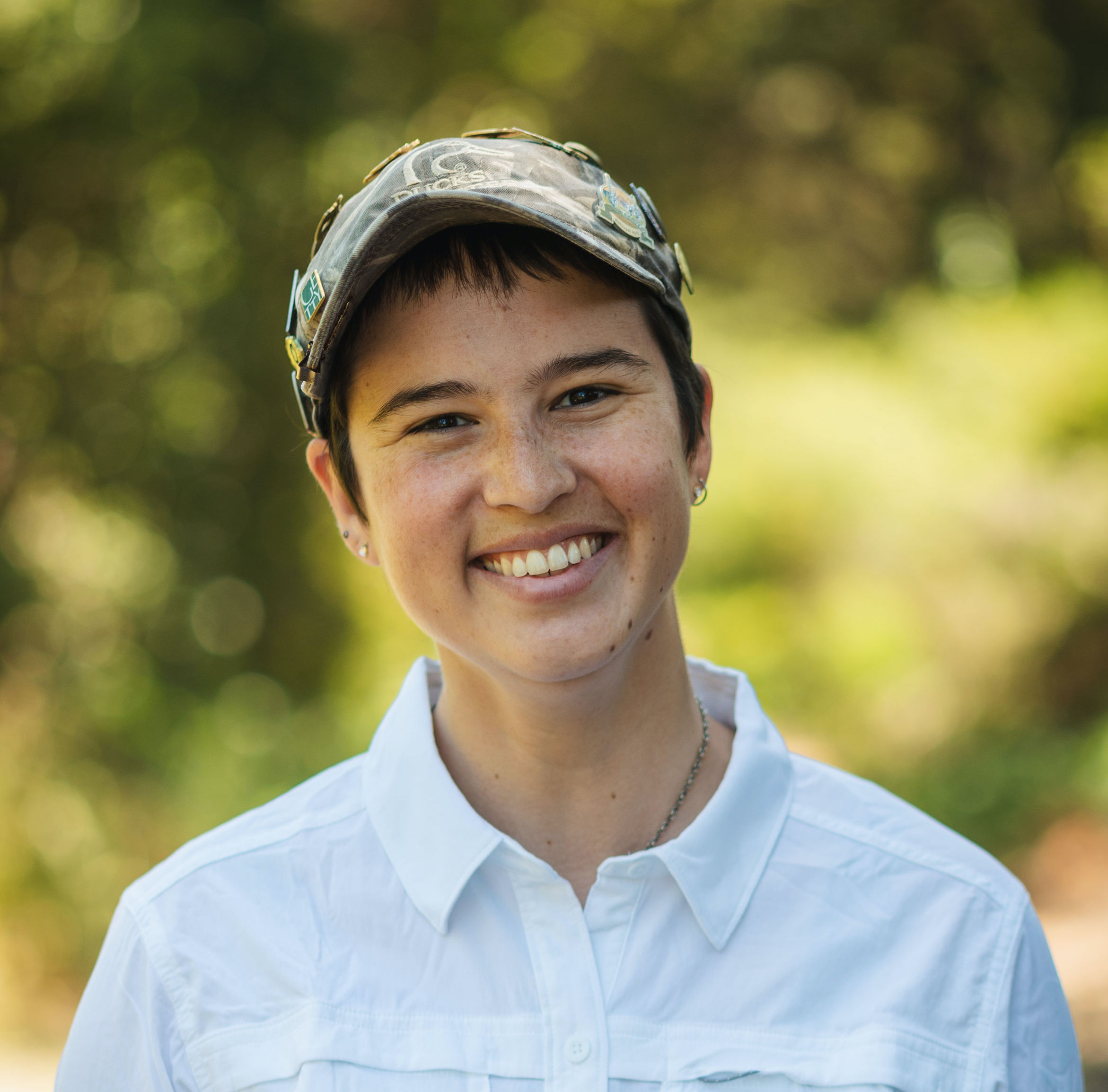
Ariana Remmel
Author
B.A. (biochemistry and molecular biology) Reed College
M.S. (chemistry, chemical biology track) University of California, San Diego
Internships: The Monterey Herald, KQED public radio, Chemical & Engineering News
I was always going to be a chemist. As a child, I used a coffee filter to separate a marker’s black ink into a rainbow of pigments, entranced by what seemed like real-life magic. One of my favorite chores was checking the pH of our aquarium because I could use a test kit that changed from a sickly yellow to a soothing blue when the water was safe for its inhabitants. I learned to love the smell of vinegar when mixing dyes for Easter eggs because I knew it would make my designs even brighter.
Chemistry brings color to my life. I started my career doing chemistry in a lab. Now I tell stories across the spectrum of science that help people experience how vibrant the world can be.
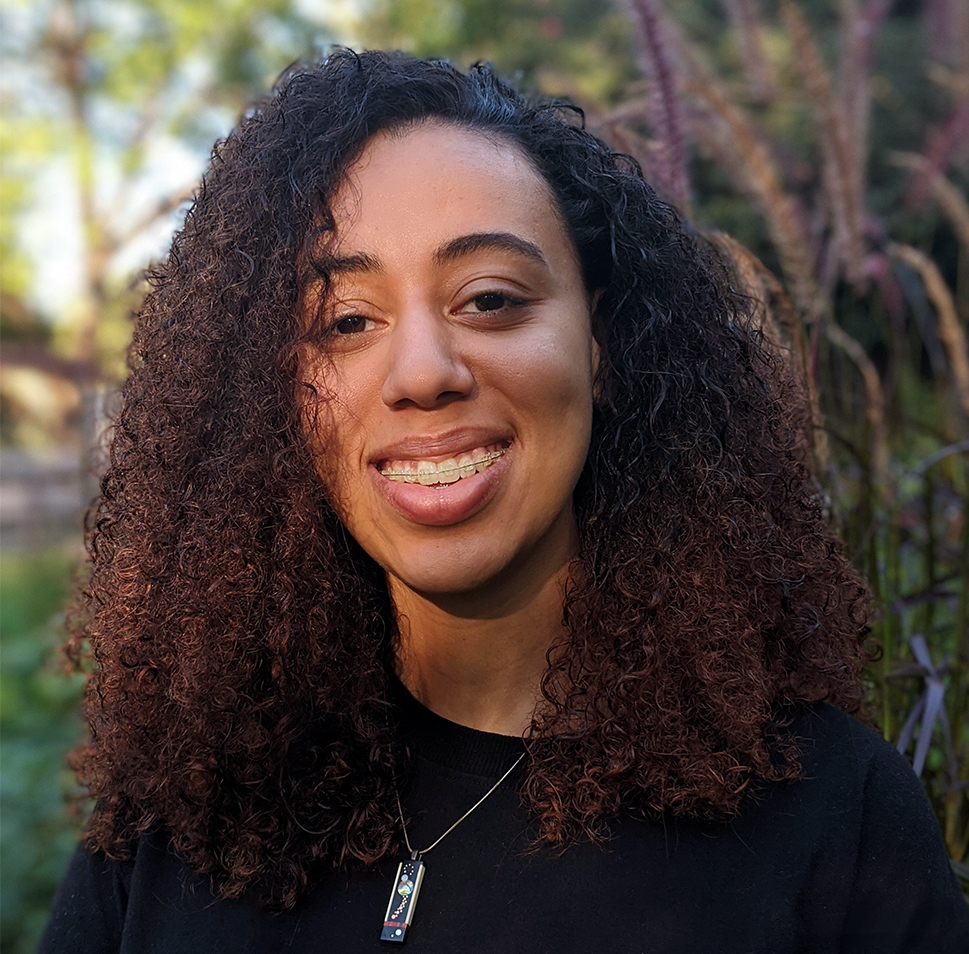
Liz Wahid
Illustrator
B.S. (animal science) Cornell University
I am a Science Illustrator who focuses primarily on ornithological illustrations. My backgrounds in fine art, wildlife conservation, and the care of captive raptors constantly inspire my work.
My passion for Scientific Illustration stems from my belief in the importance of visual scientific communication as a means to efficiently and approachably relay essential information to the general public. Through my positions as a zookeeper, an education presenter for the Cornell Raptor Program, and veterinary assistant for a small animal and exotics hospital I learned the significant role visual communication plays in effective public outreach and education. Through opportunities as a research assistant for the Elephant Listening Project and bird banding at the Cornell Lab of Ornithology, I learned the importance of being able to communicate to the public both the process of research and the urgency of the need to restore and manage wildlife.
I see birds as a gateway to connecting with and conserving nature, as a curiosity and regard for birds can foster a world of change in the scope of wildlife conservation. It is my hope that the accuracy of my illustrations helps viewers to better understand nature, and the subjects I illustrate inspire others to connect with the natural world around them.
